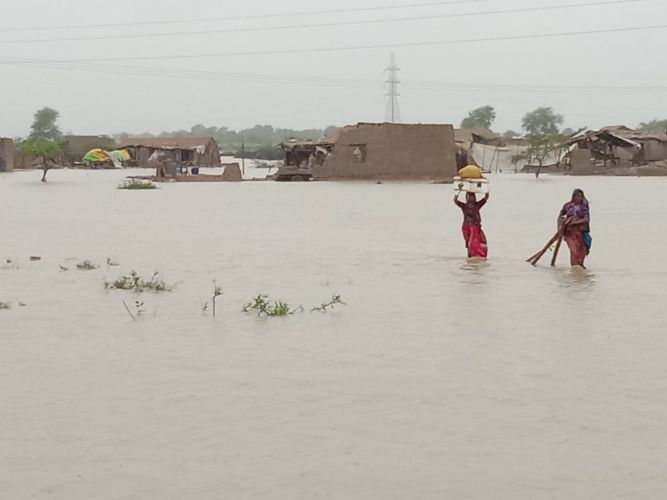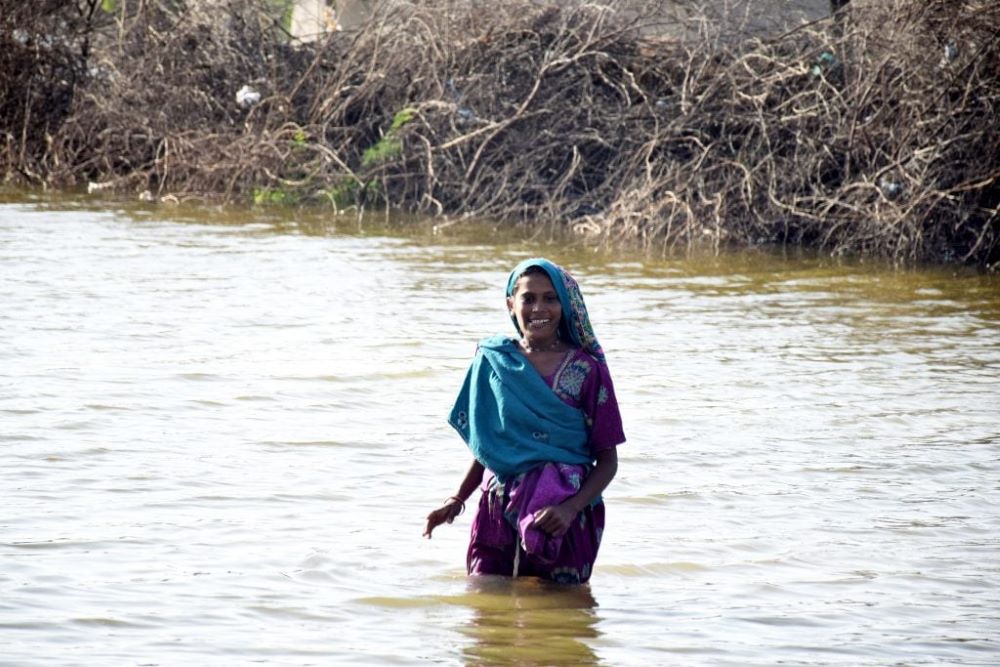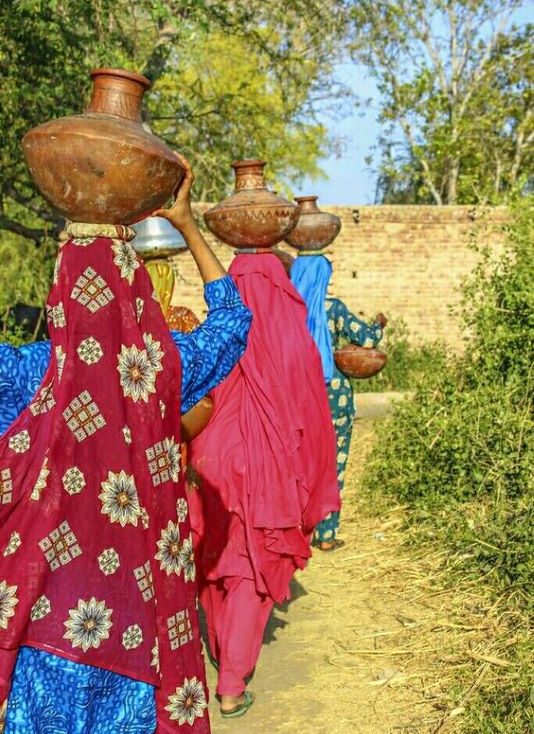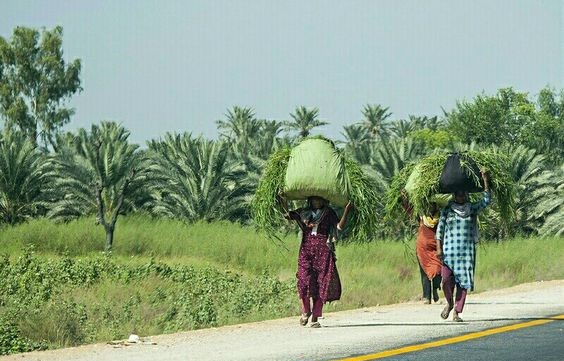
The women are more impacted by the natural disasters, but despite their extraordinary role, they are deprived of honorable place in the society
Maria Memon
Throughout the history, gender inequality has impacted differently. Let’s talk about how the disaster of structural gender inequality affects women and girls differently than it affects boys and men. The vulnerability of females increases when they belong to a lower social class or lower socioeconomic group, especially in the global South. This vulnerability affects preparedness, evacuation, response, the death toll, and recovery. Prior to any kind of disaster, women and girls usually bear the primary responsibility of taking care of their homes and the people within them, including children, older family members, and people with disabilities.
As a matter of fact, patriarchal system has always been dominant. British sociologist Walby describes patriarchy as a social system in which men hold authority over women, children and property.
Firstly, in patriarchal societies women are excluded from social, political and economic positions. Secondly, women are paid less for their work and are seen as having unequal value. Thirdly, women are subject to economic dependence, violence, domestication and marginalization in decision- making.
The disasters have made women more vulnerable and subjected them to more hardships, such as the burden of work, than they usually face. This includes household chores, childcare, livestock care, and the economic responsibilities. Women are more vulnerable segment of society, and unfortunately, they receive low wages when they enter the public sphere.
 In disaster risk reduction, women discover and build their ability for leadership before, after, and during disasters
In disaster risk reduction, women discover and build their ability for leadership before, after, and during disasters
Moreover, the disaster lead to decreased wages, putting a heavier economic burden on women. Therefore, there are issues concerning with economic feminists. Numerous issues regarding women’s oppression and vulnerabilities are highlighted indicating that it’s a fact that disasters hinder women’s economic empowerment. Prior to the disaster, women earned income by producing handicrafts and garments at home. However during and after the disaster, the economic opportunities decrease, making women more vulnerable as they now have to support their husbands financially.
A lot of research has found that in disaster risk reduction, women discover and build their ability for leadership before, after, and during disasters. But instead of these important points being highlighted in our society and related to men, we are not recognizing women’s strength, power, and courage in the community. Males are still leaders of the community, although they do not make extraordinary decisions in disaster risk reduction, but women do. In any case of emergency, women used to give an urgent and quick response.
 In the short-term reconstructive stages, women served as decision-makers. In many areas, during the long-term recovery process, women could be breadwinners when their male members of the family have no labor work; they earn wage labor and hold their houses whatever they earn money. It increases women’s extra work burden because in our society women are household workers and maintain the household work.
In the short-term reconstructive stages, women served as decision-makers. In many areas, during the long-term recovery process, women could be breadwinners when their male members of the family have no labor work; they earn wage labor and hold their houses whatever they earn money. It increases women’s extra work burden because in our society women are household workers and maintain the household work.
In Bangladesh, many women, especially in rural areas, are unable to leave their homes without a male family members and often rely on them for decision-making, says a case study from the southern coastal region of Bangladesh.
Women, adolescents, and children are supposed to be the most vulnerable to natural disasters. During Hurricane Katrina, the United States faced the greatest survival challenges for its population, primarily the female section of society, particularly those of Afro-American origin. Due to fewer health care facilities during the disaster period, women are vulnerable to reproductive and sexual health problems and increased rates of sexual and domestic violence. Most policies and programs on climate change and disaster issues are not gender neutral. It means nature does not do justice to women. Unfortunately, in post-disaster situations, women are not getting support from governmental or non-governmental organizations.
Another case study from Dara Ghazi Khan
When cotton picking season occurred during harvesting in Dera Ghazi Khan, the result was that they suffered heatwaves of high temperature in the summer season when their husbands did migration while they were harvesting. They said, “We come back home, we take care of the children, livestock care, and households, and we got very tired doing a lot of things in a single day on a daily basis. It is natural that we get irritated by our lives. Extra work burden results in less care for our children, and we also do not spend extra time with them.”
They spent more time and energy on crop production, livestock management and give less time to household or domestic work.
The study highlighted the following vulnerabilities of women:
- The risk is high for pregnant cotton pickers: When they go to the field, women bear heatwaves mostly aged and young women suffer a lot.
- The secondary impact of at risk on women is that they are also in danger to low income at home when their husbands do not earn good money because of disasters.
- Many women from lower- to middle-class backgrounds who stay home contribute to the household income by embroidering scarves and shawls.
- Gender migration also made women vulnerable; men go to urban areas to earn, while women are at home doing household things and carrying extra agricultural burdens.
- No authority is highlighted for decision-making: Research found that during the disaster women were giving quick responses and making decisions better than men and manage the whole family with stuff , but still women are considered oppressed and subjugated while in critical conditions they do everything better than men.
- Pregnancy and childbirth make women exceptionally vulnerable in post-disaster. Situations of women pregnancy in disaster were making women at high risk of their babies and their lives also, while the babies have birth they faced mal nutrition because the mothers didn’t get proper food.
 Conclusion
Conclusion
The history and so many research studies have found that women are always kept backward. They haven’t any right for the decision-making and have no any good access to resources. It is said women have the less ability as compared to men but in disasters we saw the women’s hard struggle and bravery. In emergency situations they were giving quick response than men despite their vulnerabilities. They take quick decisions and become the helping hand of their husbands; they bear extra work burden than men, take care of their children, livestock and agriculture but still men are the leaders of the society, despite the fact that they were not doing work in disaster risk as the women did. Researchers couldn’t find women’s honored place and leadership authorities but still males of the community are dominant over the women. Have a look at the women of Sindh, impacted adversely during the 2022 floods, their role in helping the men and children of their family as well as the society’s response to them during post-disaster period. We will find a huge gender inequality.
______________
 Maria Memon is BS Final Year student at the Department of Anthropology and Archaeology, University of Sindh, Jamshoro, Sindh, Pakistan
Maria Memon is BS Final Year student at the Department of Anthropology and Archaeology, University of Sindh, Jamshoro, Sindh, Pakistan